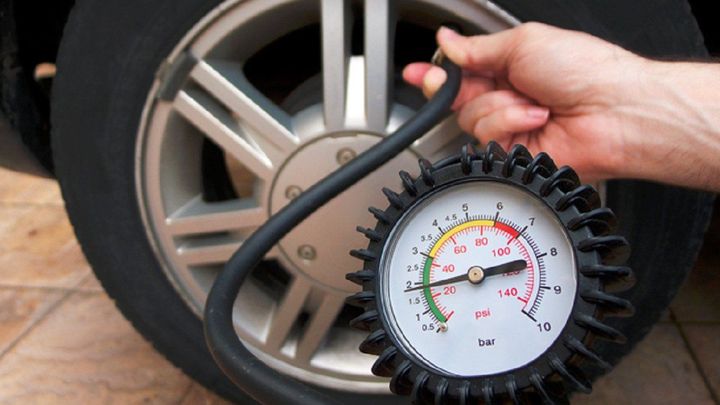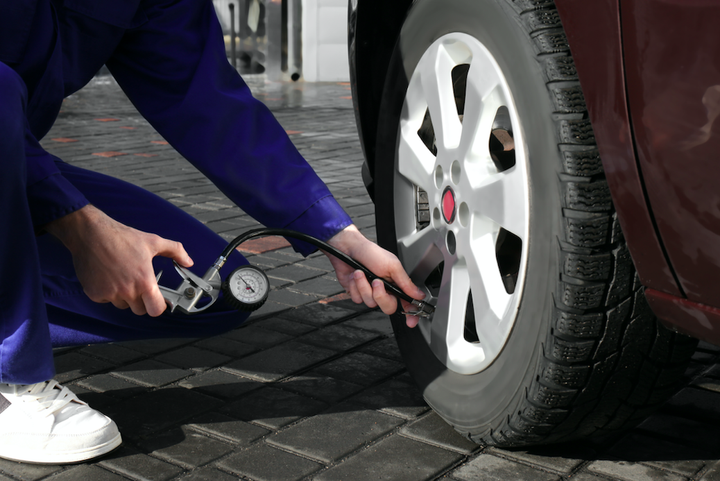


Maintaining proper tire pressure is crucial for optimal vehicle performance, safety, and fuel efficiency. While traditional air-filled tires can lose pressure over time due to factors like temperature changes and natural air diffusion, nitrogen-filled tires offer several advantages. This comprehensive guide will explore the benefits of nitrogen tires, the importance of checking tire pressure regularly, and provide a step-by-step process for accurately checking and adjusting nitrogen tire pressure.

Nitrogen tires have gained popularity in recent years due to their potential advantages over traditional air-filled tires. Here are some key benefits of nitrogen tires:
| Benefit | Description |
|---|---|
| Slower Air Loss | Nitrogen molecules are larger and less likely to escape through the tire's porous rubber, resulting in slower air loss and more consistent tire pressure. |
| Improved Fuel Efficiency | By maintaining proper nitrogen pressure, you can enjoy improved fuel efficiency. |
| Extended Tread Life | Proper nitrogen pressure can extend the tread life of your tires. |
| Better Handling | Nitrogen tires are less susceptible to pressure fluctuations caused by temperature changes, improving vehicle handling and stability. |
| Increased Safety | Properly inflated nitrogen tires reduce the risk of underinflation or overinflation, which can lead to premature tread wear, decreased fuel economy, and compromised vehicle stability. |
Proper tire pressure is essential for several reasons:
Underinflated tires can cause increased rolling resistance, leading to higher fuel consumption and premature tread wear.
Overinflated tires can result in a harsher ride, uneven tread wear, and an increased risk of blowouts or tread separation.
Maintaining the recommended tire pressure not only optimizes fuel efficiency and extends the life of your tires but also enhances vehicle handling and stability, improving overall safety on the road.
The first step in checking your nitrogen tire pressure is to determine the recommended pressure for your vehicle. This information can typically be found in the following locations:
Owner's Manual: The recommended pressure is usually given in pounds per square inch (PSI) and may vary depending on the make, model, and load capacity of your vehicle.
Tire Information Placard: This sticker or placard is located on the driver's side door jamb or inside the fuel door. It provides the recommended PSI values for the front and rear tires, as well as the maximum load capacity for your vehicle.
It's essential to understand the following terms:
| Term | Definition |
|---|---|
| PSI (Pounds per Square Inch) | The unit of measurement for tire pressure, representing the amount of air or nitrogen pressure required to support the weight of your vehicle. |
| Load Capacity | The maximum weight your tires can safely support, including the vehicle's weight and any additional cargo or passengers. |
Follow the manufacturer's recommended tire pressure and load capacity guidelines to ensure optimal performance, safety, and longevity of your tires.
To accurately check the nitrogen pressure in your tires, you'll need a tire pressure gauge that is compatible with nitrogen. These gauges are designed to provide precise readings for nitrogen-filled tires and are available in various types:
Digital gauges
Dial gauges
Stick gauges (also known as pencil gauges)
When selecting a tire pressure gauge, consider factors such as accuracy, ease of use, and compatibility with nitrogen tires. High-quality gauges from reputable brands are recommended for reliable and consistent readings.
Follow these steps to check the nitrogen pressure in your tires:
Locate the valve stem on the tire and unscrew the cap by turning it counterclockwise. This will expose the valve stem, allowing you to connect the tire pressure gauge.
Firmly press the gauge onto the valve stem until you hear a hissing sound, indicating a secure connection. This step is crucial to ensure an accurate pressure reading.
Depending on the type of gauge you're using, interpret the reading differently:
Digital gauge: The pressure will be displayed as a numerical value on the screen.
Dial gauge: Look for the needle's position on the dial and read the corresponding pressure value.
Stick gauge: The plastic stick inside the gauge will extend, and you'll need to read the highest visible marking on the stick to determine the pressure.
Compare the pressure reading to the recommended value for your vehicle, as specified in the owner's manual or tire information placard.
Repeat the process for each tire, including the spare, to ensure consistent pressure across all tires. Uneven tire pressure can lead to uneven tread wear and compromised handling and stability.
After checking the nitrogen pressure in your tires, you may encounter the following scenarios:
| Scenario | Description | Consequences |
|---|---|---|
| Underinflated Tires | The pressure reading is lower than the recommended value. | - Increased rolling resistance - Reduced fuel efficiency - Premature tread wear - Excessive heat generation - Increased risk of tire failure or blowouts |
| Overinflated Tires | The pressure reading is higher than the recommended value. | - Harsher ride - Uneven tread wear - Increased risk of blowouts or tread separation due to reduced traction and flexibility |
It's essential to maintain the recommended tire pressure to ensure optimal performance, safety, and longevity of your tires.

If your tires are under- or overinflated, you'll need to adjust the nitrogen pressure accordingly:
Adding Nitrogen: If your tires are underinflated, you'll need to add nitrogen to bring them up to the recommended pressure level. Most gas stations and tire shops offer nitrogen inflation services, but be sure to request pure nitrogen to maintain the benefits of nitrogen-filled tires.
Releasing Nitrogen: If your tires are overinflated, you'll need to release some nitrogen. Most tire pressure gauges have a built-in valve or pin that allows you to depress the valve stem and release air or nitrogen gradually. Be careful not to release too much pressure at once, as this can lead to underinflation.
After adding or releasing nitrogen, recheck the pressure to ensure it's within the recommended range. It's essential to double-check the pressure to avoid any potential issues caused by under- or overinflation.
To ensure optimal performance and longevity of your nitrogen tires, follow these maintenance tips:
Regular Pressure Checks: Check your nitrogen tire pressure regularly, at least once a month or before embarking on a long trip. Fluctuations in temperature and normal air loss can affect the pressure over time, even with nitrogen-filled tires.
Tire Rotation and Alignment: Regularly rotate your tires according to the manufacturer's recommendations and have your vehicle's alignment checked periodically. Proper alignment and rotation ensure even weight distribution and minimize excessive wear on specific tires.
Visual Inspections: Regularly inspect your tires for signs of wear, damage, or embedded objects that could cause a puncture or leak. Look for:
Cuts
Bulges
Uneven tread wear
Address any issues promptly to prevent further damage or potential tire failure.
Using Pure Nitrogen for Top-ups: When adding air to your nitrogen tires, it's recommended to use pure nitrogen to maintain the benefits and avoid introducing moisture or other contaminants. Mixing regular air with nitrogen can diminish the advantages of using nitrogen-filled tires.
Maintaining proper nitrogen tire pressure is crucial for optimal vehicle performance, safety, and fuel efficiency. By following the steps outlined in this comprehensive guide, you can accurately check and adjust the nitrogen pressure in your tires, ensuring they are inflated to the recommended levels.
Regular pressure checks, tire rotation and alignment, visual inspections, and using pure nitrogen for top-ups are essential maintenance practices that will help extend the life of your tires and provide a smoother, more efficient driving experience.
Remember, proper tire maintenance is not only important for your vehicle's performance but also contributes to your safety on the road. By taking the time to check and adjust your nitrogen tire pressure regularly, you can enjoy the benefits of nitrogen-filled tires while minimizing the risks associated with under- or overinflation.
Tires filled with nitrogen typically have green valve stem caps to indicate they contain nitrogen gas. You can also use a nitrogen analyzer to check the nitrogen levels in your tires.
Yes, you can mix air and nitrogen in your tires, but it will dilute the nitrogen concentration and reduce its benefits over time.
You should check the pressure of nitrogen-filled tires monthly and before long trips, just as you would for air-filled tires.
No, nitrogen-filled tires do not eliminate the need for TPMS. You should still rely on your TPMS to monitor tire pressure.
Yes, you can use nitrogen to inflate run-flat tires, which are required to have a TPMS.
The cost of filling tires with nitrogen can vary, but it typically ranges from $5 to $10 per tire.
No, you do not need to replace the valve stems when converting to nitrogen-filled tires.
While it is possible to fill tires with nitrogen at home using a nitrogen tank and regulator, it is generally recommended to have it done by a professional.
The main disadvantage of using nitrogen in tires is the additional cost compared to using regular air.
No, nitrogen-filled tires do not directly improve braking performance compared to air-filled tires with proper inflation.

Sarah isn't your average gearhead. With a double major in Mechanical Engineering and Automotive Technology, she dived straight into the world of car repair. After 15 years of turning wrenches at dealerships and independent shops, Sarah joined MICDOT to share her expertise and passion for making cars run like new. Her in-depth knowledge and knack for explaining complex issues in simple terms make her a valuable asset to our team.








